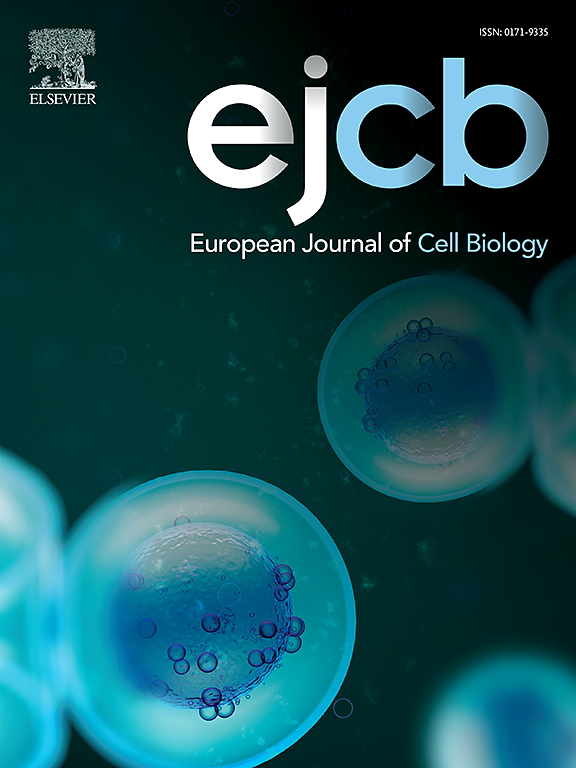长期脂肪源性干细胞/基质细胞培养过程中生理常氧(5 % O2)下葡萄糖代谢辅助通量的活性和功能
IF 4.3
3区 生物学
Q2 CELL BIOLOGY
引用次数: 0
摘要
能量代谢稳态是影响间充质干细胞/基质细胞发育轨迹的主要因素。主要的糖酵解活性是细胞增殖和维持高能量状态的主要驱动因素。在这里,我们研究了两个关键的辅助途径的功能:磷酸戊糖途径(PPP)和果糖-2,6-二磷酸途径(FBP),以评估它们对脂肪衍生干细胞/基质细胞(ASCs)在不同氧条件下的治疗潜力的影响:5 % O2 -生理常氧或21 % O2 -大气氧。我们的研究结果表明,在5 % O2中培养的ASCs增加了增殖、迁移和干性因子的表达率,这在初始和中期表现突出。此外,在5 % O2中培养的ASCs表现出增强的抗自由基保护机制,增加LDH基因表达,提高细胞外酸化率(ECAR)。通过估计HIF-1α水平,我们得出结论,5% %的氧气条件不足以诱导ASCs的深度缺氧状态。然而,在蛋白质水平上,无论氧条件如何,PPP和FBP通路在年轻(2代)细胞中似乎都更活跃,并且它们的活性随着时间的推移而减弱。此外,在ASCs中,Polydatin对G6PDH的化学抑制和PFK-158对PFKFB3的抑制(传代-2)显示了剂量和时间依赖性对降低细胞迁移能力的影响。然而,我们的工作强调了ASC代谢对普遍外部条件的适应性,培养物的老化导致糖酵解相关辅助途径的下降。本文章由计算机程序翻译,如有差异,请以英文原文为准。
Activity and function of auxiliary fluxes of glucose metabolism in response to physiological normoxia (5 % O2) during long-term Adipose-Derived Stem/Stromal cell culture
Energy metabolism homeostasis emerges as a dominant element influencing mesenchymal stem/stromal cells’ trajectory of development. The predominant glycolysis activity is a primary driver of cell proliferation and maintenance of the high-energetic state. Here, we examined the functions of two crucial auxiliary pathways: the phosphate-pentose pathway (PPP) and fructose-2,6-biphosphate pathway (FBP) to evaluate their impact on the therapeutic potential of Adipose-Derived Stem/Stromal cells (ASCs) during prolonged culture in various oxygen conditions: 5 % O2 - physiological normoxia or 21 % O2 - atmospheric oxygen. Our findings demonstrate that ASCs cultured in 5 % O2 increased the rate of proliferation, migration, and expression of stemness factors, which is prominent during the initial and middle passages. Additionally, ASCs cultured in a 5 % O2 exhibited heightened protection mechanisms against free radicals, increased LDH gene expression, and elevated extracellular acidification rate (ECAR). By estimating the HIF-1α level, we concluded that 5 % oxygen conditions were insufficient to induce a profound hypoxic state in ASCs. However, at the protein level, both the PPP and FBP pathways appeared to be more active in young (2-passage) cells, regardless of oxygen conditions, and their activity diminished over time. Additionally, the chemical suppression of G6PDH by Polydatin and inhibition of PFKFB3 by PFK-158 in ASCs (passage-2) revealed dose- and time-dependent effect on decreasing migratory capabilities of cells. Nevertheless, our work underscores the adaptable nature of ASC metabolism to prevailing external conditions, with the aging of the culture contributing to the decline in glycolysis-associated auxiliary pathways.
求助全文
通过发布文献求助,成功后即可免费获取论文全文。
去求助
来源期刊

European journal of cell biology
生物-细胞生物学
CiteScore
7.30
自引率
1.50%
发文量
80
审稿时长
38 days
期刊介绍:
The European Journal of Cell Biology, a journal of experimental cell investigation, publishes reviews, original articles and short communications on the structure, function and macromolecular organization of cells and cell components. Contributions focusing on cellular dynamics, motility and differentiation, particularly if related to cellular biochemistry, molecular biology, immunology, neurobiology, and developmental biology are encouraged. Manuscripts describing significant technical advances are also welcome. In addition, papers dealing with biomedical issues of general interest to cell biologists will be published. Contributions addressing cell biological problems in prokaryotes and plants are also welcome.
 求助内容:
求助内容: 应助结果提醒方式:
应助结果提醒方式:


